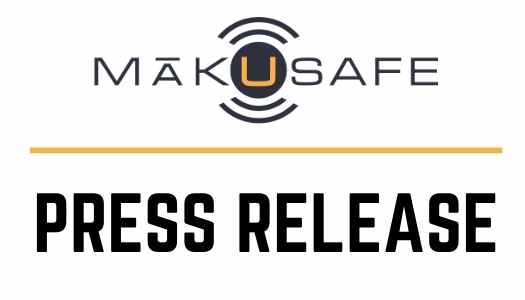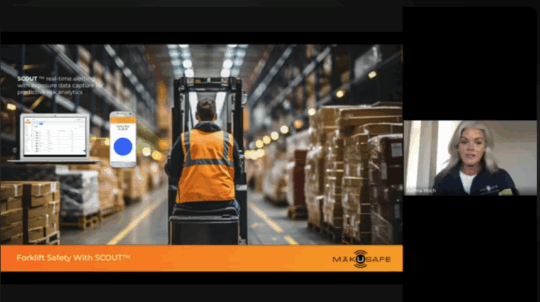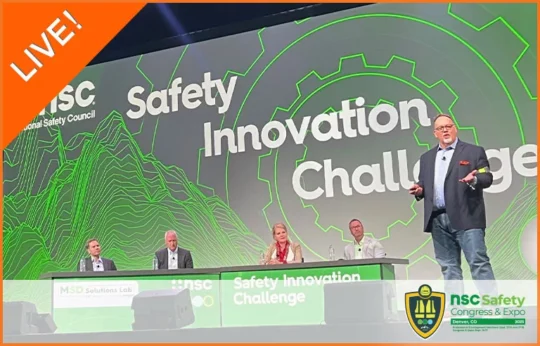The MākuSafe® Difference: Part 1 – Impact For Workers
April 30, 2019
This piece is the first installment of a five-part series highlighting the impact of MākuSafe®. Stay tuned to the blog to learn about how MākuSafe® benefits safety leaders, industrial organizations, worker’s compensation and loss prevention departments, and insurer core systems.
Sensor Use in High-Risk Industries
When it comes to workers, MākuSafe’s key focus is protection. And that makes sense when you consider that about 31.3 million American workers are engaged in high-risk industries, including — but certainly not limited to — construction, mining, and manufacturing.
With so many employees putting their health and safety at risk each day, you’d think that sensors would be more widely used to proactively address safety hazards. But the reality is that the use of sensors in the workforce right now is extremely limited. In fact, a study conducted by AIHA10 found that over half of respondents said they are monitoring less than 20% of their workforce. When you consider that actual conditions vary, it’s likely that this number is even smaller when it comes to monitoring that’s done on the worker.
On-worker monitoring is done using sensors, and these sensors have the potential to revolutionize how we approach worker safety. They can help businesses and safety professionals to develop better standards, safer work practices, and more effectively targeted regulations and incentives.
And for workers, this all comes adds up to greater protection and improved safety while on the job.
Collecting Helpful Data While Minimizing Worker Concerns
Monitoring can be a burden for workers, though, and the last thing that employers want is for sensors to interfere with, or otherwise impact, the ability to carry out tasks safely and efficiently. This is a key focus for MākuSafe® — and one of the main reasons that workers will appreciate it.
The sensors that the MākuSafe® system uses are completely non-invasive. They don’t cause any discomfort and they certainly don’t interrupt the worker during work. Since privacy can also be a concern, the system is designed so that there is no biometric component and the data is collected, stored, and used in compliance with HIPAA. There’s also no need for continuous monitoring. MākuSafe® only sends data when there is an indication that something happened. It looks outward from workers to sense and gather information about the environment around them.
These features drive home the fact that MākuSafe® truly is about worker protection. The system is not intended to detect, monitor, and penalize behaviors, and there’s no fear about how workers might be perceived by managers and peers because it’s really just data about the conditions being experienced.
Making an Impact on Worker Safety
But how does the MākuSafe® system tangibly affect worker safety? How does it improve worker protection?
It comes back to the on-worker sensors mentioned above. These sensors gather personalized data about potential hazards and risk exposure. They monitor key leading indicators like environmental conditions, high-risk motion, and location of these indicators, and capture these details when thresholds are approached. The result is the automatic recording of near misses — without the interruption of work — that safety leaders can use to prevent accidents in the future.
This near-miss data is critical, because about 85% of near misses go unreported. A worker who trips and almost falls on a factory floor, for example, is unlikely to interrupt his or her task to report something that didn’t happen and didn’t result in an injury. But this type of information — this important leading indicator — is the key to incident prevention. And MākuSafe® is able to easily collect and interpret that data so that workers (and their supervisors) don’t have to.
The system also enables on-demand manual voice memo reporting. The wearable device has a button that the worker can press and hold to submit a manual report, voice memo, or near miss indicating that something needs attention. For example, if a worker notices that someone stacked boxes in a dimly lit hallway, he or she can record a voice memo on the spot advising that the boxes should be moved before someone gets hurt. In addition to being a practical tool, it supports the overall safety program as voice recognition searches for keywords and cross-references those keywords with other data being collected, allowing organizations to more easily identify trends.
In a nutshell, the top priority of MākuSafe® is to predict exposure to potentially dangerous environments and circumstances so that more workers go home safely at the end of their shifts. A seemingly insignificant near-miss experienced by one worker today might be a leading indicator to a serious accident for another worker tomorrow — and that’s what MākuSafe® works to prevent.
About MākuSafe
MākuSafe® is a Software as a Service (SaaS), Data, and Analytics company based in America’s Heartland. Our mission is to improve worker health, safety, and productivity while reducing worker’s compensation claims and mitigating workplace risks. Founded in West Des Moines, Iowa in 2016 by Gabriel Glynn and Mark Frederick, MākuSafe® has developed proprietary wearable technology that gathers real-time environmental and motion data from workers. Our cloud platform, MākuSmart, then uses machine learning to identify high-risk trends in the facility. The portal auto-records near-miss leading indicators, proactively targets loss control resources to specific conditions & occurrences, and streamlines compliance reporting. Learn more at https://youtu.be/vy8VB8stx4A (video) and https://makusafe.com/news





